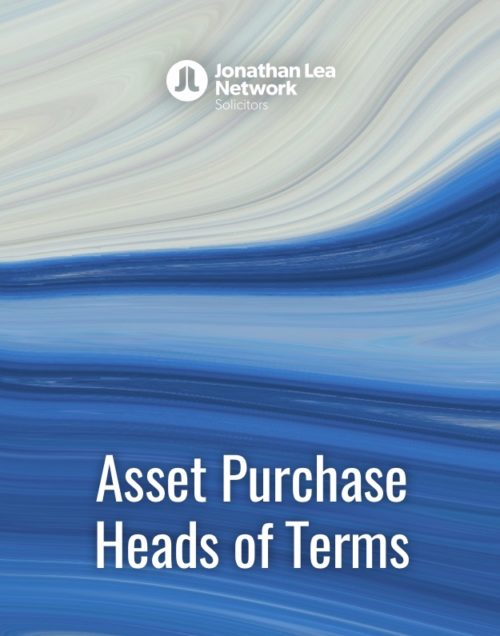Put and call option agreement
£6.99
This product constitutes an easily adaptable call and put option agreement, together with a set of tailored guidance notes which aim to set out how to correctly fill-out the template and explain all significant operative provisions so as to allow you to put into effect a valid and legally binding agreement.
Our template agreement is for use by a private limited company where the seller grants the buyer a call option over shares and the buyer grants the seller a put option over the same shares.
Further down the page are our guidance notes relating to this template which you will also receive as a separate document when you buy the product.
Put and call option agreement template guidance notes
This guide set out how to correctly complete the template and explains all significant operative provisions so as to allow you to put into effect a valid and legally binding agreement.
This agreement is intended to be a template only and must be adapted to the particular circumstances of your case – the template will not be appropriate for every scenario.
Your input is required at the parts of the agreement highlighted in yellow and the wording inside the square brackets which we have included explains clearly the information that should be inserted. You are advised to fill in the wording in square brackets in lower case unless directed otherwise. Any figures should be entered in numerical form. The brackets should be removed after the amendments are made so as to produce a ‘final form’ version of the agreement.
Our template is drafted on the following assumptions:
- The buyer and the seller are both private limited companies incorporated in England and Wales.
- The option is not subject to satisfaction of conditions precedent before it is validly granted and can be exercised.
- The put option and the call option are over the same shares.
- The option period does not begin immediately on signing the agreement.
- The put option may only be exercised once the call option has lapsed.
- The option can be exercised only once and cannot be exercised in different tranches.
- The consideration payable on exercise of the option will be satisfied in cash at completion.
- It is subject to English law.
The template document is drafted primarily from the buyer’s point of view.
You should also note the following points:
- Before granting the options, check the transfer provisions and pre-emption provisions in the company’s articles of association and any shareholders’ agreement. Articles of association of private companies often contain pre-emption rights over shares whereby they must first be offered for purchase by existing shareholders. Sometimes these rights are included in other documents such as a shareholders’ agreement. Before the option is granted, the company’s articles of association therefore should be reviewed to ascertain whether a waiver of these rights is required from the company’s shareholders. Without such a waiver, there may be a technical breach of the target company’s articles of association or other document containing the pre-emption rights.
- If either of the parties to the agreement are individuals rather than corporations, appropriate amendments will need to be made to the template.
Clause breakdown
Background
This section, sometimes called ‘recitals’, gives a narrative of the background and purpose of the agreement. Although its inclusion is not essential, it can be a useful point to introduce unusual or complicated features of the agreement, which can be defined and then referred to later in the agreement.
This part of the agreement does not form part of its operative provisions and it does not have direct legal consequences. However, in cases of dispute it may be used as an interpretative guide to operative provisions that are subsequently found to be obscure, ambiguous or otherwise the subject of dispute.
If the option can only be exercised in certain specific circumstances, consider whether it is appropriate to explain the circumstances surrounding its grant in the background.
Clause one (‘Interpretation’)
Clause 1.1 sets out the definitions that will apply throughout the agreement – the main purpose for this is to reduce repetition within the body of the agreement, making it shorter and easier to read. In addition, as it gives specific meanings to particular terms used in the agreement, it also both avoids ambiguity and makes it clear that those terms are intended to include matters which they might otherwise be found not to cover (or vice versa).
Unless expressly defined, the courts will interpret non-technical terms in accordance with their ordinary and natural meaning, or the meaning which can be inferred by the words that the parties chose to use in the document. Extrinsic expert evidence may be necessary to interpret technical terms not defined in the document itself.
Clauses 1.2 – 1.13 (inclusive) are standard interpretation clauses that are used in most commercial contracts and agreements.
Clause two (‘Grant of the options’)
Clause 2.1 contains the operative wording for the grant of the put option. In the case of a put and call option, the consideration for the grant of the put option may be the grant of the call option itself (this is how clause 2.1 is currently drafted).
If there is no consideration, the document should be instead executed as a deed, which means that both parties’ signatures should be independently witnessed by somebody who is over the age of 18 and is not connected with the transaction in any way. Note that this template is drafted so that it is executed as a deed by default, although the parties are free to dispense with this requirement if they wish (however, if clause 7.5(a) is included then the agreement must be executed as a deed as further explained below).
Clause 2.2 contains the operative wording for the grant of the call option. Some form of nominal consideration (such as £1.00) is normally paid on the grant of a call option. As above, if there is no consideration, the document should be executed as a deed.
Clause 2.3 sets out a covenant (i.e. a form of contractual promise) as to the seller’s title to the option shares. Shares are a form of personal property and as such, they attract the covenants for title implied by the Law of Property (Miscellaneous Provisions) Act 1994 (“LPMPA”). The template provides that when the option is exercised and the option shares are sold, they are sold with “full title guarantee”. This imports into the agreement the implied covenants for title contained in section 3 of the LPMPA so that they are sold free of charges, encumbrances and third party rights.
The last part of clause 2.3 deals with the treatment of dividends or other distributions that are made in connection with the option shares during the option period. This clause should be read in conjunction with clause 4.4 and clause 5.4. It is for the parties to negotiate which of them obtains the benefit of these. The length of the option period may dictate which party keeps the payments. If the option period is over a number of years, the seller is likely to argue that it should retain the benefit of the dividends at least until the option is exercised, if not until completion. The buyer is likely to argue the opposite – that it should take the benefit of any rights of this kind from the date of exercise of the option rather than from completion.
Clause three (‘Option Period’)
Clause 3.1 sets out details of the period during which the put option is capable of being exercised. The template assumes that the put option cannot be exercised immediately on execution of the agreement.
If the parties intend the put option to be exercisable immediately on execution, consider amending the definition of the option period and this clause as follows:
“Put Option Period: the period commencing on the date of this agreement and expiring on [DATE]”.
“The Put Option may be exercised at any time during the Put Option Period and, for the purposes of this clause, the date of exercise of the Put Option shall be the date on which the Seller serves the Exercise Notice on the Buyer and not the date on which the Buyer is deemed to receive the Exercise Notice in accordance with clause 18.2”.
Clause 3.2 sets out details of the period during which the call option is capable of being exercised. The template assumes that the call option is not capable of exercise immediately on execution of the agreement. If this is the intention of the parties, consider amending the definition of option period and this clause as set out above.
If different option periods are required, appropriate dates should be included in clause 3.1 and clause 3.2. Ensure that the definition of option period is amended as necessary.
If both options are capable of being exercised during the same period, consider including a provision stating that one option will lapse on completion of the sale and purchase of the option shares under the other option.
Clause 3.3 – the template assumes that the date of the exercise notice is the date that the notice is actually given, rather than the date that it is deemed to be received in accordance with clause 18.2. In the case of the call option, this is to the buyer’s advantage as, for example, it enables the buyer to exercise the option on the last day of the option period without having to factor in the appropriate notice periods for deemed delivery in accordance with clause 18.2. In the case of the put option, such a clause will be to the seller’s advantage.
Clause 3.4 confirms that the put option will become operative only if the call option has lapsed.
Clause 3.5 allows the put option to be exercised early if a takeover offer, or similar offer for a private company, is made before the option period has begun.
Clause 3.6 allows the call option to be exercised early if a takeover offer, or similar offer for a private company, is made before the option period has commenced. While this clause may be unacceptable to the seller, the buyer may want to protect its position. For example, in circumstances where the option price is lower than the price offered by a third party for the shares, the buyer would want the ability to exercise the option and then benefit from the higher price offered for the shares by the third party.
If the call option is exercisable immediately, the definition of “Third Party Offer” and clauses 3.5 and 3.6 should be removed.
The parties should also consider whether there are any other circumstances in which the call option and put option should be capable of being exercised early.
Clause four (‘Exercise of Put Option’)
This clause sets out the procedure for the exercise of the put option.
In relation to clause 4.1(c), the parties should consider how the consideration will be calculated. If there is a fair market value or if the consideration is to be calculated by reference to another formula, consider whether 15 business days after the date of the exercise notice is sufficient.
Regarding the contents of the exercise notice, the parties could include an agreed form of the exercise notice as a schedule to the agreement.
Clause 4.2 provides that the put option cannot be exercised on more than one occasion and that it must be exercised for all the option shares.
Clause 4.4 deals with the treatment of dividends and any distributions during the option period. As above, how these items are treated is a matter for negotiation between the parties. The seller should resist passing on dividend payments to the buyer, particularly if the option period is for a number of years. The buyer is likely to resist this clause.
Clause 5 (‘Exercise of Call Option’)
This clause sets out the procedure for the exercise of the call option.
In relation to clause 5.1(c), the parties should consider how the consideration will be calculated. If there is a fair market value or if the consideration is to be calculated by reference to another formula, consider whether 15 business days after the date of the exercise notice is sufficient.
Regarding the contents of the exercise notice, the parties could include an agreed form of the exercise notice as a schedule to the agreement.
Clause 5.2 provides that the call option cannot be exercised on more than one occasion and that it must be exercised for all the option shares.
Clause 5.4 deals with the treatment of dividends and any distributions during the option period. As above, how these items are treated is a matter for negotiation between the parties. The seller should resist passing on dividend payments to the buyer, particularly if the option period is for a number of years. The buyer is likely to resist this clause.
Clause 6 (‘Consideration’)
The template assumes that the consideration will be satisfied in cash at completion (as confirmed in clause 6.1).
Clause 6.2 sets out the details of the amount of consideration that is payable on exercise of the option. Our template provides, in the alternative, for:
- A total aggregate payment in respect of all of the option shares;
- An amount per option share; or
- Specific provisions to be inserted. For example, it may be appropriate to use a form of “fair market value” calculation as at the date of the exercise of the option. The schedule in this template is blank. Specific valuation procedures should be agreed between the parties and/or their respective accountants for inclusion in the schedule.
Which method is appropriate in clause 6.2 will depend on negotiations between the parties and the nature of the transaction.
Clause 6.3 provides for the parties to use their respective reasonable endeavours to procure that the consideration is determined as quickly as possible, and in any event, no later than the date specified for completion in the relevant exercise notice. The latter part of the clause provides that if the parties fail to agree the consideration during the specified time, the calculation of the consideration is to be referred to an independent expert in accordance with clause 12.
If the consideration is to be calculated by reference to either an aggregate figure or a price per share, clause 6.3 is unlikely to be relevant and can be removed.
Clause 7 (‘Completion’)
Clause 7.1 sets out the details of where completion takes place. This may be the offices of the buyer, the seller or their respective legal advisers.
Alternatively, clause 7.1 could be amended so as to allow for remote/virtual completion, and in this case the clause could read as follows:
“Completion shall take place remotely on the date of this agreement by the parties exchanging signed counterparts of this agreement via email in accordance with clause 21”.
Clause 7.2 provides that the buyer will pay the consideration to the seller at completion. It allows, in the alternative, for the buyer to procure that the consideration is paid. Ideally, payment should be made through the buyer and seller’s solicitors’ respective client accounts.
Clause 7.3 sets out details of the items that the seller must deliver to the buyer in order to effect completion. Clause 7.3(c) can be deleted if there are no pre-emption rights or if the seller is the owner of all shares in the company.
Clause 7.4 – on completion of the exercise of the option, the seller will deliver to the buyer an executed transfer (or transfers) for the option shares. Under section 771 of the Companies Act 2006 the company must, on presentation of a transfer of shares, either register the transfer or give the transferee notice of refusal, together with its reasons for refusal. Subject to that, the transfer will be approved by the company’s board for entry in its register of members, subject to being duly stamped (or the relevant certificate on the reverse of the stock transfer form being duly completed in circumstances where duty is not payable). It is an offence to make an entry in a register of transfers or register of members if a transfer has not been duly stamped (as per section 17 of the Stamp Act 1891).
The stamp duty legislation does not make any specific person liable to pay stamp duty. However, for practical purposes, it is usually the buyer’s responsibility as it is the buyer who will want to be registered as the owner of the option shares. With a simple cash consideration, stamping is straightforward. Until the transfer is registered, the seller remains the legal owner of the shares (note that only the registered holder of the shares is recognised by the company).
Clause 7.5 is optional and therefore can be deleted if it is not applicable to your transaction. If the clause is included, it grants any director of the company a power of attorney if the buyer complies with its obligations to pay the consideration and the seller subsequently fails to deliver the stock transfer form(s) and/or the share certificate(s) to the buyer.
If clause 7.5(a) is included, the option agreement must be executed as a deed, given that under section 1 of the Powers of Attorney Act 1971, a power of attorney must be granted by deed.
If a power of attorney is to be irrevocable, as in this template, it must be granted by way of security and should specify the proprietary interest or obligations to be protected. The template is drafted as a security power on the basis that it is given to secure the obligations under the option agreement and the buyer’s interest in the shares once the option is exercised.
A security power cannot be revoked by the appointer without the attorney’s consent and (unlike ordinary powers of attorney) is not automatically revoked by the winding-up or dissolution of the appointer or, in the case of an individual appointer, the appointer’s death, incapacity or bankruptcy (section 4, Powers of Attorney Act 1971).
Clause 7.6 is also optional and so it can be removed in its entirety if it is not relevant to your transaction. The seller should not agree to any part of the consideration remaining outstanding at completion. If any portion is outstanding, this clause is for the seller’s benefit.
The buyer should ensure that it can pay the consideration on the date specified in the exercise notice for completion (see clause 4.1(a) and clause 5.1(a)).
Consider whether clause 7.6 should apply if there is a dispute between the parties regarding the amount of the consideration, or whether specific provisions should be included in the agreement to deal with such a situation. For example, the independent expert appointed under clause 11 could also be given authority to determine the amount of interest (if any) that is payable in such circumstances.
Clause 8 (‘Reorganisation’)
This clause seeks to protect the buyer’s potential shareholding in the company from dilution and to protect the seller’s position enabling it to sell the same proportion of its shares in the company. It also seeks to ensure that if any of the events contemplated by the definition of reorganisation do occur, the appropriate amount of additional consideration is paid (clause 8.1(b)).
In this template, this clause applies to both the put and call options. You should consider whether it should apply to only one of them. For example, if a clause such as this applied only in the context of the put option, it would favour the seller, possibly ensuring that the seller is not left with a residual shareholding in the company (denying the seller a “clean break” from the company). If such a clause applies only to the call option, it would favour the buyer, ensuring that its potential shareholding in the company is not diluted.
Consider the definition of reorganisation to ensure that it covers all necessary eventualities. For example, as drafted, the definition does not extend to cover any consideration shares that the company allots in connection with acquisitions.
Consider whether restrictions should be imposed on the seller regarding its exercise of any voting rights attaching to the option shares (see clause 8.1(a)).
Consider whether to include more detailed provisions relating to the adjustment of the consideration. For example, where the consideration is calculated on a per share basis (see clause 6.2), the following provisions could be inserted into the template:
“If the Reorganisation involves a consolidation or sub-division of the Option Shares, then the consideration for each share shall be adjusted by multiplying it by the nominal amount of one Option Share immediately after that consolidation or subdivision and dividing the result by the nominal amount of one Option Share immediately before that consolidation or subdivision”.
If the Reorganisation involves the issue by the Company of any shares credited as fully paid by way of capitalisation of profits or reserves, the Consideration per share shall be adjusted by multiplying it by the aggregate nominal amount of the issued shares of the same class as the Option Shares immediately before the capitalisation issue and dividing the result by the sum of that aggregate nominal amount plus the aggregate nominal amount of the shares issued by way of capitalisation of profits or reserves”.
Other additional provisions could include confirmation from the company in the form of a written option statement.
Clause 9 (‘Warranties’)
This clause sets out the limited warranties that the seller gives in connection with the option shares.
These include warranties as to the ability of the seller to enter into the agreement (clause 9(a)), the ownership of the shares (clause 9(b)), the percentage of the company’s issued share capital that the option shares represent at completion (clause 9(c)) and that the seller has disclosed all material information in relation to the company of which it is aware (clause 9(d)).
The warranties in clause 9(a) and clause 9(b) should be uncontroversial.
Unless the company is wholly owned by the seller, the seller should resist giving the warranties in clause 9(c) and clause 9(d). Both relate to the company, and unless the seller has day-to-day control of the company, it is unlikely to be in a position to give these warranties in an unqualified form.
Clause 10 (‘Buyer’s protection’)
This clause sets out a limited number of undertakings to be given by the seller regarding the option shares.
Consider whether it is appropriate to include additional protections for the buyer in the option agreement. This is likely to depend on the relative bargaining position of the parties.
The buyer is likely to be concerned about obtaining additional protection in the context of a call option. If only a put option is granted in favour of the seller, the buyer is unlikely to obtain any additional protection.
Clause 10.1 contains two undertakings about the option shares. Clause 10.1(a) should not be contentious.
The seller should ensure that clause 10.1(b) ties in with clause 4.4 and clause 5.4. If the seller retains all dividends during the option period, it should also have the ability to exercise the votes attaching to the option shares during the same period, so should resist accepting a clause drafted in terms of clause 10.1(b).
Clause 10.2 is optional. This clause provides that, until the earlier of completion or lapse of the options, the seller will procure that the company does not do certain things. The clause gives the buyer some protection and comfort during the option period regarding the conduct of the company’s business.
The seller should carefully consider any undertakings of this type before agreeing to accept them. These undertakings are unlikely to be acceptable unless the seller owns the entire issued share capital of the company or is closely involved in its day-to-day running.
If the seller owns the entire issued share capital of the company, the buyer should consider obtaining more extensive undertakings from the seller regarding the conduct of the business during the option period. The seller is likely to resist this.
Clause 11 (‘Determination by an expert’)
Clause 11.1 provides, in the alternative, for disputes about the consideration and any reorganisation to be dealt with by an independent expert. Our template has been drafted on the basis that the expert will be appointed by the President of the Institute of Chartered Accountants in England and Wales.
A dispute mechanism (as set out in clause 11) regarding the consideration will only be appropriate in circumstances where the consideration is calculated by reference to:
- A formula; or
- A fair market value calculation.
If a total aggregate amount is being paid in respect of the option shares, then clause 11 can be removed in its entirety.
Consider whether it is appropriate to insert some assumptions on which the independent expert is to base its valuation.
Clause 11.2 provides that the expert’s costs are to be borne equally between the parties so as to strike a fair balance between them.
Clause 11.3 provides that the company’s independent accountant shall act as an expert and not as an arbitrator. That way, the parties ensure that the procedure is not governed by the Arbitration Acts.
Clause 12 (‘Confidentiality and announcements’) to Clause 22 (‘Governing law and jurisdiction’)
Clauses 12 to 22 (inclusive) are called “boilerplate” clauses. These kinds of provisions are repeated in all kinds of commercial contracts and are responsible for regulating the operation of the contract.
Boilerplate clauses do not usually contain the commercial terms that vary from one transaction to another.
Boilerplate clauses often use standard wording and most are not typically heavily negotiated. They are nevertheless important as many contractual disputes depend on the drafting of boilerplate clauses (for example, the entire agreement clause).
These clauses should be self-explanatory and therefore guidance in relation to each clause has not been provided within these guidance notes.
Note on clause 21 (‘Counterparts’) – This clause provides that the parties to the agreement may execute (i.e. sign) separate copies of it, rather than all parties having to sign the same physical copy of the agreement. Using a counterparts clause is advisable for reasons of certainty and to prevent any argument that the agreement is not binding because it has not been properly executed.
For example, the existence of a counterparts clause will prevent a party from claiming that an agreement is not binding because there is no one copy that is signed by all the parties, or because they did not know that they were entering into a binding contract by signing an agreement that had not been signed by the other party or parties.
For the avoidance of doubt, the existence of a counterparts clause does not prevent the parties from having a meeting and all signing the same physical copy of the agreement if they wish to do so.
Schedule (‘Calculation of consideration’)
If the consideration is to be calculated by reference to a complicated valuation procedure, consider including detailed provisions in a schedule to the agreement. Such provisions should be agreed by the parties and/or their respective accountants and included in this schedule.









